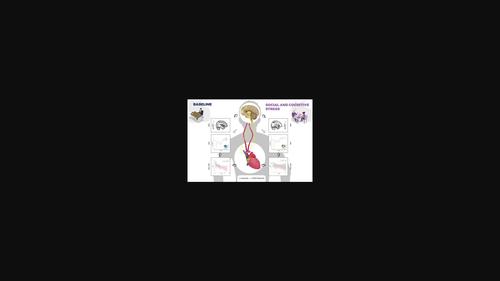当前位置:
X-MOL 学术
›
Eur. J. Neurosci.
›
论文详情
Our official English website, www.x-mol.net, welcomes your
feedback! (Note: you will need to create a separate account there.)
Heart–brain interactions during social and cognitive stress in hypertensive disease: A multidimensional approach
European Journal of Neuroscience ( IF 2.7 ) Pub Date : 2020-09-23 , DOI: 10.1111/ejn.14979 Agustina Legaz 1, 2, 3 , Adrián Yoris 1, 4 , Lucas Sedeño 1 , Sofía Abrevaya 1, 4 , Miguel Martorell 1, 4 , Florencia Alifano 1, 4 , Adolfo M. García 1, 2, 5, 6 , Agustín Ibañez 1, 2, 6, 7, 8
European Journal of Neuroscience ( IF 2.7 ) Pub Date : 2020-09-23 , DOI: 10.1111/ejn.14979 Agustina Legaz 1, 2, 3 , Adrián Yoris 1, 4 , Lucas Sedeño 1 , Sofía Abrevaya 1, 4 , Miguel Martorell 1, 4 , Florencia Alifano 1, 4 , Adolfo M. García 1, 2, 5, 6 , Agustín Ibañez 1, 2, 6, 7, 8
Affiliation

|
Hypertensive disease (HTD), a prominent risk factor for cardiovascular and cerebrovascular diseases, is characterized by elevated stress-proneness. Since stress levels are underpinned by both cardiac and neural factors, multidimensional insights are required to robustly understand their disruption in HTD. Yet, despite their crucial relevance, heart rate variability (HRV) and multimodal neurocognitive markers of stress in HTD remain controversial and unexplored respectively. To bridge this gap, we studied cardiodynamic as well as electrophysiological and neuroanatomical measures of stress in HTD patients and healthy controls. Both groups performed the Trier Social Stress Test (TSST), a validated stress-inducing task comprising a baseline and a mental stress period. During both stages, we assessed a sensitive HRV parameter (the low frequency/high frequency [LF/HF ratio]) and an online neurophysiological measure (the heartbeat-evoked potential [HEP]). Also, we obtained neuroanatomical data via voxel-based morphometry (VBM) for correlation with online markers. Relative to controls, HTD patients exhibited increased LF/HF ratio and greater HEP modulations during baseline, reduced changes between baseline and stress periods, and lack of significant stress-related HRV modulations associated with the grey matter volume of putative frontrostriatal regions. Briefly, HTD patients presented signs of stress-related autonomic imbalance, reflected in a potential basal stress overload and a lack of responsiveness to acute psychosocial stress, accompanied by neurophysiological and neuroanatomical alterations. These multimodal insights underscore the relevance of neurocognitive data for developing innovations in the characterization, prognosis and treatment of HTD and other conditions with autonomic imbalance. More generally, these findings may offer new insights into heart–brain interactions.
中文翻译:

高血压疾病中社会和认知压力期间的心脑相互作用:一种多维方法
高血压病 (HTD) 是心脑血管疾病的主要危险因素,其特点是压力倾向升高。由于压力水平是由心脏和神经因素共同支撑的,因此需要多维度的洞察力来有力地了解它们对 HTD 的破坏。然而,尽管它们具有至关重要的相关性,但 HTD 中的心率变异性 (HRV) 和多模态神经认知标志物仍然存在争议和未探索。为了弥合这一差距,我们研究了 HTD 患者和健康对照者的心脏动力学以及压力的电生理学和神经解剖学测量。两组都进行了特里尔社会压力测试 (TSST),这是一项经过验证的压力诱导任务,包括基线和精神压力期。在这两个阶段,我们评估了一个敏感的 HRV 参数(低频/高频 [LF/HF 比率])和在线神经生理测量(心跳诱发电位 [HEP])。此外,我们通过基于体素的形态测量 (VBM) 获得了神经解剖学数据,用于与在线标记相关。相对于对照组,HTD 患者在基线期间表现出增加的 LF/HF 比率和更大的 HEP 调制,减少基线和压力期之间的变化,并且缺乏与假定的前纹状体区域灰质体积相关的显着压力相关 HRV 调制。简而言之,HTD 患者表现出与压力相关的自主神经失衡的迹象,反映在潜在的基础压力超负荷和对急性社会心理压力缺乏反应,并伴有神经生理学和神经解剖学改变。这些多模式见解强调了神经认知数据对于在 HTD 和其他具有自主神经失衡的疾病的表征、预后和治疗方面进行创新的相关性。更一般地说,这些发现可能为心脑相互作用提供新的见解。
更新日期:2020-09-23
中文翻译:

高血压疾病中社会和认知压力期间的心脑相互作用:一种多维方法
高血压病 (HTD) 是心脑血管疾病的主要危险因素,其特点是压力倾向升高。由于压力水平是由心脏和神经因素共同支撑的,因此需要多维度的洞察力来有力地了解它们对 HTD 的破坏。然而,尽管它们具有至关重要的相关性,但 HTD 中的心率变异性 (HRV) 和多模态神经认知标志物仍然存在争议和未探索。为了弥合这一差距,我们研究了 HTD 患者和健康对照者的心脏动力学以及压力的电生理学和神经解剖学测量。两组都进行了特里尔社会压力测试 (TSST),这是一项经过验证的压力诱导任务,包括基线和精神压力期。在这两个阶段,我们评估了一个敏感的 HRV 参数(低频/高频 [LF/HF 比率])和在线神经生理测量(心跳诱发电位 [HEP])。此外,我们通过基于体素的形态测量 (VBM) 获得了神经解剖学数据,用于与在线标记相关。相对于对照组,HTD 患者在基线期间表现出增加的 LF/HF 比率和更大的 HEP 调制,减少基线和压力期之间的变化,并且缺乏与假定的前纹状体区域灰质体积相关的显着压力相关 HRV 调制。简而言之,HTD 患者表现出与压力相关的自主神经失衡的迹象,反映在潜在的基础压力超负荷和对急性社会心理压力缺乏反应,并伴有神经生理学和神经解剖学改变。这些多模式见解强调了神经认知数据对于在 HTD 和其他具有自主神经失衡的疾病的表征、预后和治疗方面进行创新的相关性。更一般地说,这些发现可能为心脑相互作用提供新的见解。











































 京公网安备 11010802027423号
京公网安备 11010802027423号